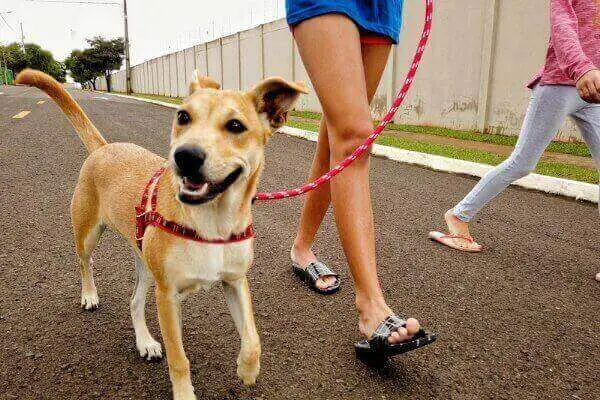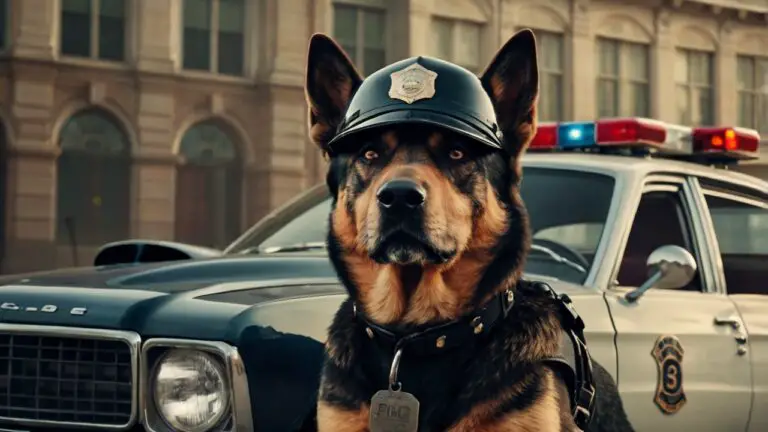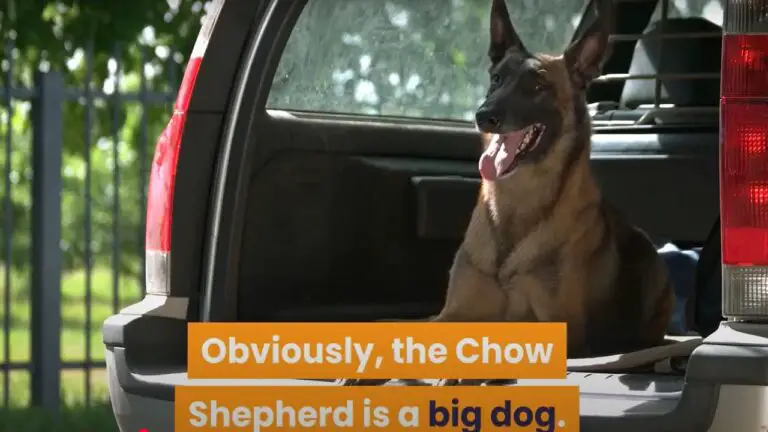Dog Leash Keeps Tangling, Going Under Dog Or Unclipping

Owning a canine comes with challenges and responsibilities including some that only dog parents can relate to. Leash tangling occurs more often than none and at times, the leash may cross over your dog’s feet causing them great discomfort. I clearly remember an experience I had with my adorable Shiba. In the middle of a walk one morning, she ran loose outside the sidewalk because of an unclipped carabiner and I can tell you that “it was stressful” is an understatement.
Leash tangling can happen for a variety of reasons, such as your dog getting excited, the leash being long, or simply not having leash-trained your dog properly. On the other hand, faulty leash clips and excessive pulling by your dog are the major causes of leash unclipping
So, what do you do when your dog leash keeps tangling or unclipping?
To deal with leash tangling issues in dogs, try using shorter leashes, avoid retractable leashes or front clip harnesses, and teach your dog to untangle himself. Consider changing any faulty clip or the entire leash to prevent unclipping. More importantly, leash training your dog can help stop tangling on a walk or leash-pulling behavior that can cause leashes to unclip.
Remember that leash training is an ongoing process and consistency, patience, and positive reinforcement are key. With the right approach, you and your dog can enjoy many happy and stress-free walks together.
Read on for a deep insight into dog leash tangling and unclipping
Jump to Section
Why Does My Dog Leash Keeps Tangling Or Going Under Dog?
Leading your pooch with an excessively long leash makes it a lot easier for him to be wrapped around the leash. A long leash offers less control and gives your dog too much room to move around, which can result in them getting tangled up or twisting the leash under their feet. Using a shorter leash, 5 feet or less, can help prevent this problem.
Another reason is that you are using a retractable dog leash. These types of leashes tend to have a lot of slack, which can easily get tangled or twisted. A regular fixed-length leash is a better option as it eliminates the problem of a tangled leash.
Furthermore, as energetic creatures, dogs need daily exercise to burn off excess energy and stimulate them mentally and physically. When deprived of their normal physical activities, they can be restless and excited. If they are attached to a leash, they may crave freedom and resort to biting the leash, jumping over it, or tangling the leash with themselves.
Why Does My Dog Leash Keep Unclipping?
It is not uncommon for dogs to pull the leash and they tend to pull even more when they realize the pulling is rewarded with more freedom. Pulling can also happen when dogs are overstimulated or lunging at other dogs or vermin.
The act of pulling can increase the tension of the clip causing it to unclip or even break, especially if you are dealing with a powerful dog.
The issue of malfunctioning dog clips or faulty D or O rings may also be a culprit in leash unclipping. These dog clips, also known as hooks or clasps, are used to keep the line attached to the ring while the rings secure the clip to the collar or harness.
These clips or rings often wear out over time disconnecting the line from the collar or harness. The durability of this clip or ring depends on the material it is made up of and stainless steel is usually more durable than other materials used.
Also, some leashes are usually best suited for small dogs or puppies but some carefree dog owners may use them for large or strong dogs, they are subjected to high tension and if their hooks do not break, it ends up unclipping.
Getting Your Dog’s Leash To Stop Dog Tangling Or Going Under Your Dog.
To easily solve the problem of tangling, you have to understand the reason why it keeps happening. However, these several tips can come in handy when dealing with leash tangling issues.
1. Walk Your On Shorter Leashes
One of the easiest ways to prevent leash tangling is to use shorter leashes for walks. When a leash is too long, it’s much more likely to get twisted up around your legs or even wrap around other objects as you go about your walk.
By opting for a shorter leash, you’ll reduce the chances of tangling significantly and ensure that both you and your pup have an enjoyable time on each outing. Additionally, shorter leashes help you keep your pooch in your field of view, making accidents and aggressive encounters with other dogs less likely.
2. Avoid Retractable Leashes
Retractable leashes may seem like a convenient way to give your pup some extra freedom during walks, but they can actually be the major contributor to leash tangling. The problem is that retractable leashes are incredibly long and made from thin materials which makes them prone to twisting up and getting tangled around your dog’s legs as they walk.
Furthermore, since the lead itself is so thin it’s easy for dogs to break away and run off. This can cause all sorts of problems both for yourself and any other people or animals you might encounter on your walk.
You should also consider that retractable leashes can take a lot more space than regular ones meaning that they can get caught on door handles, furniture, and various other surrounding objects.
3. Train Your Pooch To Heel
Leash training is an important step in avoiding leash tangling and ensuring a safe and enjoyable walk for both you and your pup. It also addresses other leash issues such as pulling, biting, and lunging. To tackle leash tangling specifically, you have to train your dog to heel (walk on your left side not behind or ahead of you) with the use of positive reinforcement.
Start by finding a quiet space free from distractions like other people or animals. Start with short periods where you practice walking around together while making sure that they remain next to you as closely as possible without pulling ahead or lagging.
As soon as they start straying away from your side, give them gentle corrections using verbal cues such as “heel” and redirect their attention back towards you.
During these practice sessions reward them when they do well either with treats or praise which will aid to reinforce good behaviors until eventually, it becomes second nature for them.
4. Teach Your Dog To Untangle Himself
Dogs by nature love to learn simple tricks and a task like undoing a tangled leash encourages their problem-solving skills and helps improve concentration levels while out on walks. This exercise will help train them to remain aware of the leash, and how it moves around them during a walk.
There are various training methods you can apply to teach your pooch leash untangling, however, positive reinforcement is most effective.
To begin with, wrap the leash around your dog and stand in a single spot. Then, you use a command like “untangle”, and give him some time to figure out how to untangle himself. If they are having a hard time, you can help guide them along by gently guiding their collar or lead as needed.
As soon as they manage to get free from the tangled mess, reward them with praise or treats so that they know what behavior is expected of them. Remember, you have to repeat this exercise frequently throughout your walks until they gain mastery.
5. Stop Using Front Clip Harness
Front clip harnesses are a type of dog harness that is designed for maximum control, comfort, and safety as it clips onto the leash at the front of the chest as opposed to attaching to the back. Unfortunately, these types of leads can regularly get tangled or go under your dog as the front attachment of the leash line does not allow for great rotatory movement.
A simple solution to this problem is using an alternative type of lead such as a back clip harness collar or regular collar.
6. Keep Your Dog Away From Busy Or Crowded Places
When walking in a public area, it is easy for the leash to become tangled around other people’s legs or objects on the ground, which can cause a lot of stress and frustration for both you and your pup. By avoiding these types of locations altogether, you will reduce the chances of getting into any kind of trouble while out on walks.
It is important to note that not all dogs are comfortable with large crowds due to their natural instinctive fear of unfamiliar environments. In such cases, opting for quieter areas with fewer people such as parks or beach fronts can help create a calmer atmosphere where your pup feels safe and secure as they explore the surroundings without having to worry about getting tangled up in their lead.
What To Do If Your Dog Leash Keeps Unclipping
Are you tired of dealing with your dog’s leash unclipping from time to time? If yes, you can get some insights from our list of effective solutions or fixes to this problem. Let’s get started!
1. Discourage Dog Pulling
Dogs have a natural habit of pulling leashes especially if they have not been leash trained. However, If they pull too hard on the leash, it can cause the clip or ring to come undone or eventually break.
Tackling the leash-pulling habit can give you more control over your pooch while ensuring that the leash suffers less tension than can cause unclipping. Below is a video that explicitly explains how to deal with the problem of leash-pulling in dogs.
2. Get A New Leash Or Replace The Leash Clip
If your dog’s leash keeps unclipping, replacing the clip or ring could be an easy fix. You may need to get a new leash if your entire leash is old or malfunctioning. Make sure to opt for collars or harnesses that are made with the best quality materials.
3. Teach Your Dog to Wait
A great way to stop your dog’s leash from popping off is by teaching them how to wait when walking. It prevents unnecessary tension that can damage or weaken your leash. It also allows you and your pooch to have a stress-free and happy walk experience.
You can instill this habit in your dog with consistent training and positive reinforcement. Fortunately, this behavior can also help you control your pooch off the leash.
Dealing with leash problems like tangling or unclipping can be annoying and in most cases, there is no foolproof solution but there are various ways to reduce the occurrence of this pesky situation.
Short-term solutions include investing in high-quality leashes. Make sure to do proper due diligence in terms of choosing a leash that can accommodate your dog’s size and strength.
On the other hand, longer-term benefits come from teaching your pup how to heel and walk properly when attached to its leash. Don’t forget: patience is key and with diligent practice, you’ll be rewarded with an obedient and intelligent canine companion.
Read related posts about





